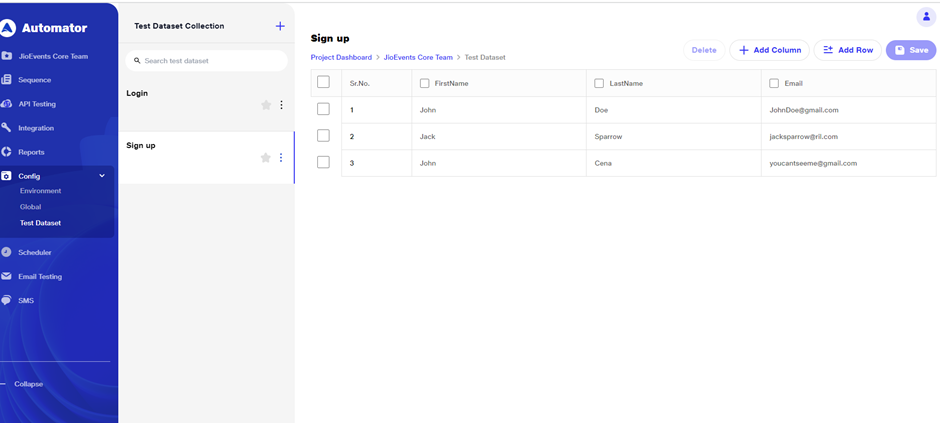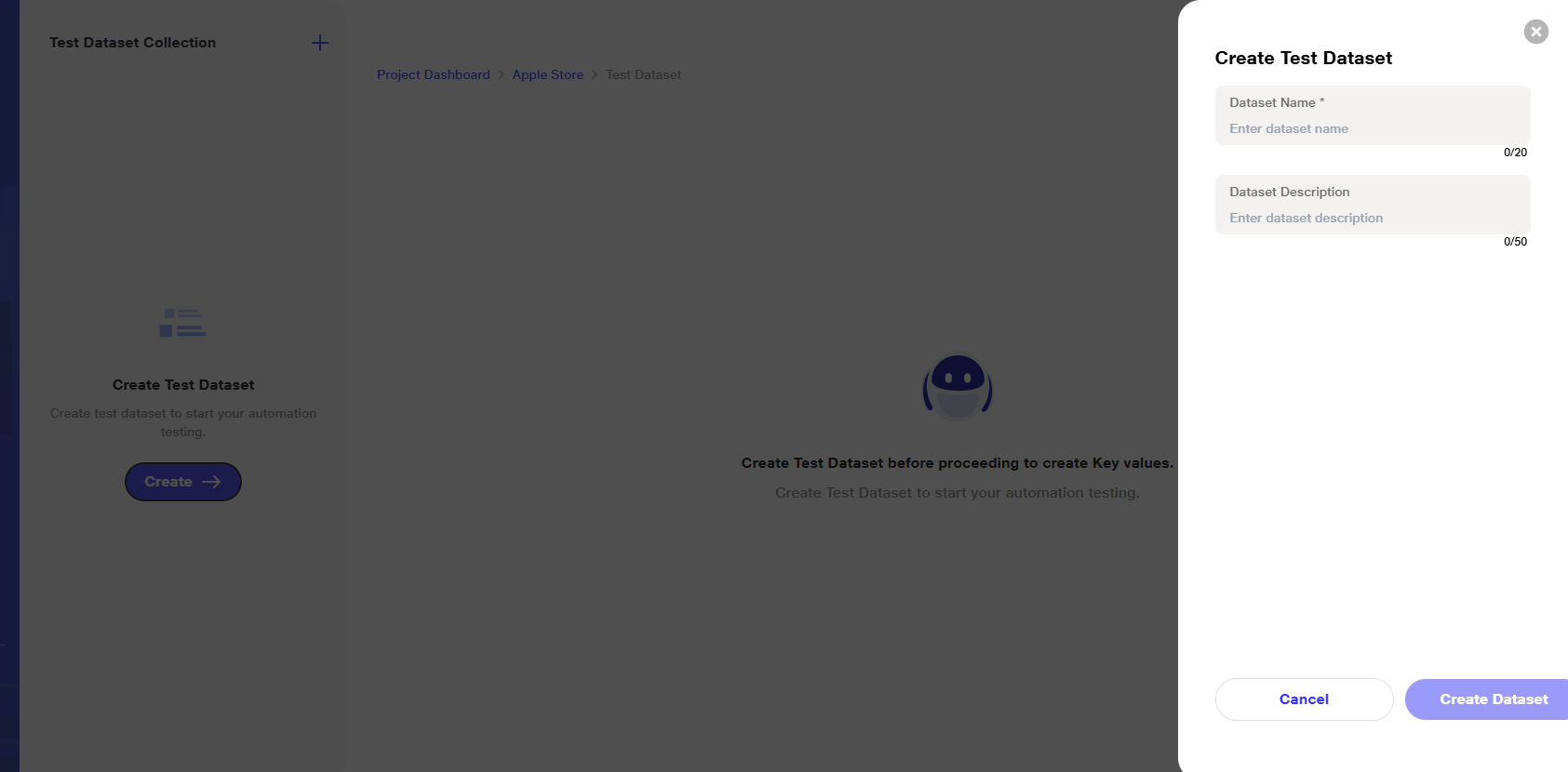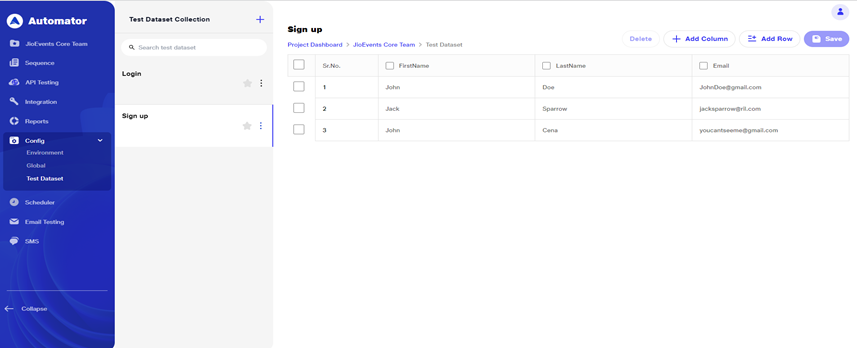TEST DATASET
Automator simplifies your testing game by teaming up with structured data tables. Each row in these tables becomes a unique test scenario, and Automator ensures your tests run smoothly through each one.
Here's the playbook: First, you connect your test journeys with these data tables. Then, you align specific test steps with attributes from the data. Steps not tied to any attribute still play their part, using their own values. Now, here's the cool part—if a data row misses a value for a particular attribute, no problem. The associated step still runs, just without a specific value for that row. It's like a dynamic script that adapts to your test data, making testing a breeze.
Creating a test dataset table -
To handle the test data tables linked to your project, hit up the test data option on the navbar. That'll pop open the screen for your test datasets.
An intuitive interface with robust functionalities allowing users to efficiently create and customize datasets to meet their unique requirements.
Structured tables of data can be seamlessly integrated with tests, enabling thorough verification and validation of functionality across multiple datasets during execution.
Each row within these tables represents a distinct test scenario. Consequently, each test will be executed multiple times, once for each existing row of test data, ensuring comprehensive coverage.
The datasets created can be effectively utilized during execution for both UI and API testing purposes. This versatility enables seamless integration of custom datasets into various testing scenarios, enhancing the efficiency and accuracy of testing processes.
To manage test data tables associated with your project, simply access the Test Dataset option in the left panel, facilitating easy navigation and organization.

To create a test data table, users initiate the process by adding a new dataset folder via the ‘+’ icon, providing essential details such as Dataset Name and Description for clarity
User should provide the following information while creation of data set-
Dataset Name: A unique name that allows you to identify the test data table;
Dataset Description:(optional): A small description which will help to identify the test data table and the information it contains

Once data set folder is created, users will find a list of these folders conveniently displayed on the left side of the screen. This layout facilitates easy navigation and quick access to the various datasets that have been created.
Users can effortlessly update or edit datasets by selecting the desired folder, which presents an expandable tabular interface. This interface includes options to add columns, rows, and facilitates seamless saving and deletion operations.
Important datasets can be designated as favorites, ensuring easy access and prioritization during execution
How created data set can be used in execution-
Test journeys can be connected with these data tables, allowing specific test steps to be aligned with attributes from the dataset.
Steps not tied to any attribute still play their part, using their own values. Now, here's the cool part—if a data row misses a value for a particular attribute, no problem. The associated step still runs, just without a specific value for that row. It's like a dynamic script that adapts to your test data, making testing a breeze.

Within the scheduler and integration section, users have the flexibility to select from the datasets they've created when executing API collections. This functionality enhances the versatility of the platform by allowing seamless integration of custom datasets into API testing workflows
Our platform empowers users to manipulate raw data effectively, ensuring the creation of high-quality datasets tailored precisely to their needs.
Users have access to customizable options for generating synthetic datasets with specific characteristics, including predefined patterns, distributions, and constraints.Repetitive tasks are automated, streamlining dataset creation workflows and enhancing overall efficiency.
Scheduling options are available for executing dataset generation tasks at predefined intervals, facilitating proactive management of testing processes.
Our platform seamlessly scales to handle large volumes of data, accommodating both small-scale experiments and enterprise-level projects with ease.
By integrating these features directly into the automator , users can effectively generate top-tier test data that precisely meets their unique testing needs. This integration significantly boosts the efficiency of their testing workflows, leading to improved overall testing outcomes.